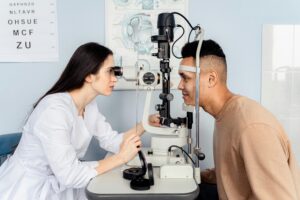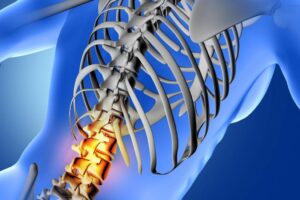
In November 2023, groundbreaking research from the Suzhou Medical College of Soochow University unveiled a new perspective on primary angle-closure glaucoma (PACG). Traditionally, elevated intraocular pressure (IOP), age, and genetic predisposition have been at the forefront of glaucoma discussions. However, novel risk factors of glaucoma reveal body weight, retinal nerve fiber layer, cataracts, and even short-term exposure to antidepressants.
This revelation emphasizes the intricate interplay between systemic health and ocular conditions, urging a deeper exploration of glaucoma. Below, we discuss risk factors, preventive care measures, and the different strategies to effectively manage glaucoma.
Understanding glaucoma risk factors
Glaucoma, a group of eye conditions that damage the optic nerve, is a leading cause of irreversible blindness worldwide. Elevated IOP is a widely established risk factor, as it can disrupt the axonal transport and compromise the blood supply to the optic nerve head. It can also lead to the excessive release of neurotransmitters, causing excitotoxicity that eventually leads to cell death.
However, the aforementioned research underlines that developing glaucoma is a much more complicated ideal. Hyperlipidemia, headache, total cholesterol, triglyceride, malondialdehyde, peptic ulcers, and even a personal history of venous thromboembolism and constipation were significantly associated with PACG. This underscores glaucoma’s role as the “silent thief of sight,” wherein it manifests gradually and, oftentimes, reveals itself abruptly for the majority of individuals.
Embracing preventive care
Because of glaucoma’s incremental development, its impact on peripheral vision may go unnoticed by individuals until irreversible damage occurs. That is why a regular eye exam remains the top form of preventive care. When done comprehensively, these tests can identify your intraocular pressure, assess the optic nerve, and analyze your visual field to detect any subtle changes. Early detection of glaucoma is crucial to control its progression because treatment efficacy is often higher in the early stages of the condition.
In addition to regular check-ups, adopting a vision-friendly diet is essential. Studies have shown that greater dietary consumption of carotenoids is associated with a protective trend against glaucoma. Carrots, known for their rich carotenoid content, can be included in the diet alongside fatty fish for omega-3 fatty acids and pumpkin seeds for magnesium. Otherwise, incorporating exercise into one’s routine has been shown to alleviate eye pressure, improve blood flow to the eyes, and slow vision loss for individuals with glaucoma. The American Academy of Ophthalmology recommends 30 to 45 minutes of aerobic exercise three to four times per week for optimal eye health.
Treating and managing glaucoma
Treating glaucoma involves a multi-faceted approach, yet individuals prescribed multiple glaucoma medications tend to face challenges in adherence, leading to fluctuations in intraocular pressure. In response to these challenges, combination drops have emerged as a viable solution. By consolidating multiple medications into a single formulation, these drops streamline the treatment regimen, potentially improving adherence and maintaining more consistent IOP control. This innovation marks a significant step forward in simplifying the management of glaucoma for individuals facing the complexities of multiple medications.
Beyond pharmaceutical interventions, laser treatment stands out as another avenue in glaucoma management. Laser procedures, such as trabeculoplasty, aim to enhance fluid drainage from the eye, thereby reducing intraocular pressure. This non-invasive approach is often considered for patients where medication alone may not provide adequate control. However, surgical interventions may be considered for advanced cases or when other treatments prove ineffective. Procedures like trabeculectomy and shunt implantation create alternative pathways for fluid drainage, alleviating pressure within the eye.
As we unravel the complexities of glaucoma, a holistic approach to eye health becomes increasingly imperative in preserving vision. Thankfully, the field of glaucoma care is advancing. With each revelation and innovation, the glaucoma community can expect brighter prospects for a high quality of life towards old age.
If you enjoyed this article, there are plenty more on the topic of health, including this one on a kidney chain reaction that is still helping people today.





